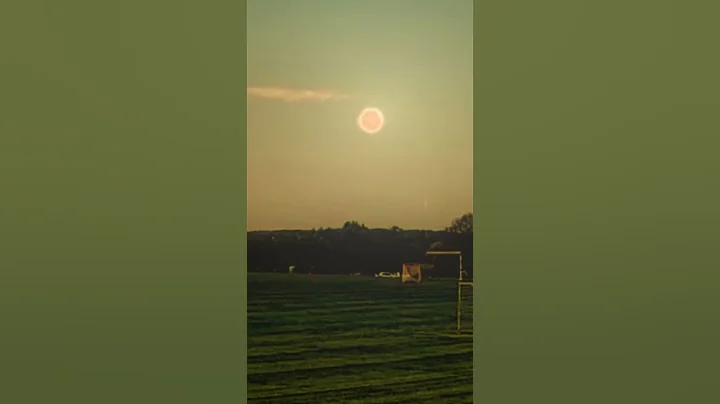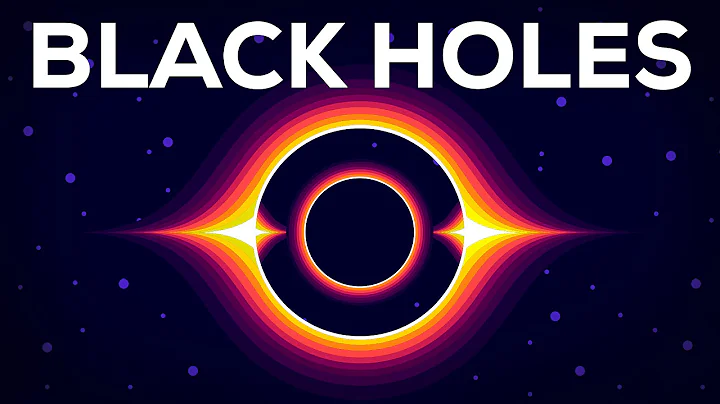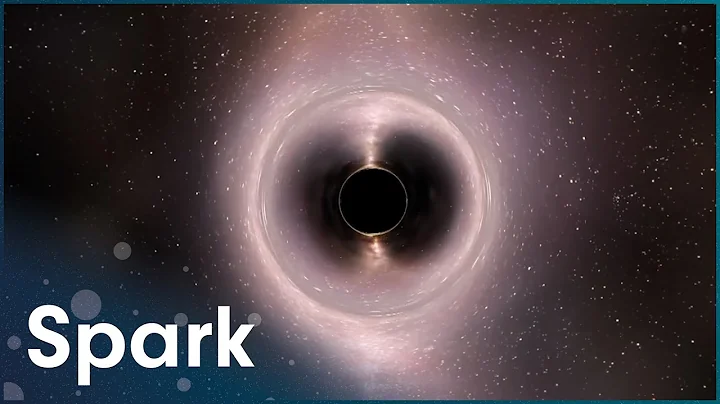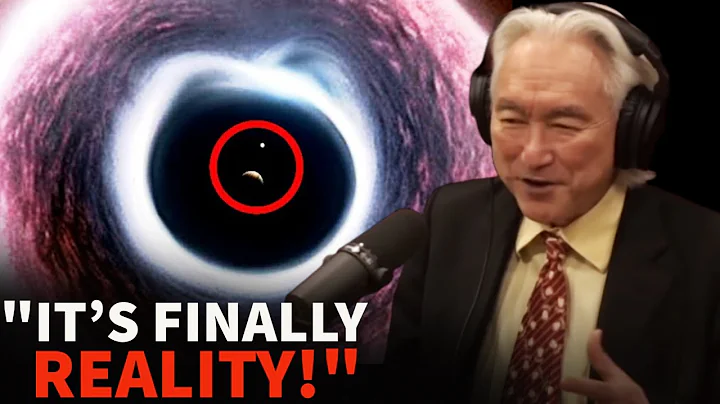
A black hole is a collapsed star
One of the first black hole facts you should know is that these fascinating regions of space form when a large star begins to run out of energy. Then it begins to collapse under its own gravity. If the star is able to retain some energy, it may become a white dwarf or a neutron star, but if it is massive enough, it may shrink until it is only the size of a small atom, which is known as It's called a gravitational singularity. A black hole refers to this area in space where the singularity ’s gravity is so strong that not even light can come out.
You will lose traces of time in a black hole
The density of a black hole is amazing, and its gravity is also very strong. According to Einstein 's general theory of relativity , which states that time is affected by your speed, this combination actually distorts the space-time around the black hole. Remember, light cannot escape a black hole, and the area just outside of the area where light cannot reach is called the event horizon. Once anything gets past this point, the speed required to escape would be greater than the speed of light, which is considered impossible as far as we know from current research.
Falling into a black hole will make you thinner
While it is unlikely that a person would survive long enough to describe the experience of falling into a black hole, the facts about black holes tell us what happens. When an individual begins free fall, they will first experience weightlessness, but this will be short-lived because the strong gravitational pull will dominate as they fall near the center. They will be squeezed inward and begin to stretch. Eventually, they become a long chain of single atoms.
We can’t see black holes – but we know where they are
One of the more interesting facts about black holes is that these objects are actually invisible. Likewise, since light cannot escape, it is almost impossible to directly observe a black hole. But scientists still know the location of black holes because of their influence on other objects. For example, their gravity is strong enough to bend light, distorting light coming from other objects. Gravity can also distort the motion of objects, allowing us to know where black holes are in the universe.
One theory involves us living in a black hole
If you can understand one of the more interesting black hole facts, consider the theory that we might be living in a black hole. It's not a widely accepted theory of black holes, but it's not completely ruled out either. Physicists have noticed that the mass-energy density in our universe is similar to that of black holes. This has led to the idea that our entire universe is just the inside of a black hole, which has led scientists to wonder whether black holes in our universe could lead to more universes...
Black holes are not the cleaners of the universe
It is widely believed that, Black holes have the ability to suck everything into them. But don’t worry, the Earth won’t be sucked into a black hole anytime soon. Even if our sun suddenly deformed into a black hole, gravity on Earth would not be affected. A black hole can only "suck" items into it if it is close enough. This depends on the location of the event horizon and the size of the black hole.
Black holes were discovered hundreds of years ago.
The theory of black holes was proposed in 1783 by John Michel and Pierre-Simon Laplace. These two men were each the first to introduce the concept of black holes into the minds of astrologers. The theory originally talked about the " dark star ", which if compressed to a small enough radius, its escape velocity would be faster than the speed of light. The term eventually became "frozen star". John Wheeler is credited with naming these objects black holes in the 20th century.
Black holes disappear
Professor Stephen Hawking is credited with proposing an unproven theory of the evaporation process known as "Hawking radiation." Black holes are thought to radiate small amounts of particles, causing them to lose mass over time. After enough time passes, the black hole should eventually disappear. However, many scientists disagree with this theory, and it has yet to be proven because the process is so slow.In the history of the universe so far, only the smallest black holes have been able to evaporate.
The core of a black hole may be smaller than an atom
An even more confusing black hole It turns out there is still a lot to learn about black holes. The core of a black hole may be smaller than an atom, which may be difficult to understand. However, gravity is so strong that scientists are still trying to find a theory of quantum gravity that would work with black holes to make sense. The center of a black hole is described as a region where all the laws of physics no longer apply.
has two types of black holes.
has two types of black holes. The first, called a "Schwarzschild", is a non-rotating black hole. Another type, known as Kerr Black Hole , is indeed spinning. Schwartzschild black holes are fairly basic, with their core remaining stationary. It consists only of a singularity and an event horizon. Kerr black holes, however, are more common and spin because of the rotation of the star they formed from. As the star collapses, the momentum in the black hole continues. This type of black hole also has more parts, including singularities, event horizons, erosion circles, and static limits. erosion circle can make an object ejected from a black hole, as long as it does not cross the event horizon.
Our Milky Way Has a Large Black Hole
Our Milky Way, the Milky Way, has a large black hole at its center. Scientists have found some evidence that we can assume that there is a supermassive black hole at the center of every large galaxy. Our galaxy, called Sagittarius A, has a mass equivalent to one-four millionth that of our sun. It could fit inside a ball that could hold millions of Earths. But the earth is not threatened by this black hole, and some scientists still doubt whether it really exists.
We don’t know what’s in a black hole
Scientists are still trying to figure out what’s in a black hole. These objects usually have a swirling ring of material surrounding them. This material will eventually fall into the black hole, traveling at high speeds. Theoretically, the force of gravity inside a black hole is infinite, which means time should slow down and eventually stop. Scientists have a hard time figuring out what happens to items inside a black hole, and unless we find a way to actually see inside a black hole, we may never know.
Black holes can merge together
According to the facts of black holes, there is really nothing that a black hole can swallow too big. A black hole can even swallow an entire galaxy. It is speculated that most galaxies have a large black hole at their center. If two galaxies with central black holes collide, they will orbit each other and feed off each other's energy. The closer they get, the faster they spin, until eventually the black holes merge into one large black hole.
Our sun may never become a black hole
Black holes are stars that have exhausted their energy. We know that our sun will eventually run out of energy, but the good news is that the facts about black holes tell us that it probably won't turn into one. This is because a star needs to be larger to transform into a black hole. Our sun will most likely become a white dwarf, but this is not expected to happen for at least 4 billion years. The more dangerous part of this transition involves the Sun's expansion before shrinking, which would cause the Earth to become uninhabitable.
Black holes come in three sizes The fact that
black holes tell us that there are three types of black holes in terms of their size. The smallest type of black hole is called a primordial black hole. Their size ranges from the size of an atom to the mass of a mountain. The most common black holes are called stellar black holes, and these are 20 times more massive than our sun. The largest types of black holes are called supermassive black holes and , and are typically found at the centers of galaxies.
Our nearest black hole is 20,000 light-years away
Early measurements of the distance between our planet and the nearest black hole led to reports that we are only 1,600 light-years away from our nearest neighbor black hole.While not dangerous, the much lower than expected number surprised scientists enough to cause them to remeasure and recalculate. New measurements show that we are actually more than 20,000 light-years away from the nearest black hole, which should make it easier for scientists worried about black holes eating our galaxy to sleep.
We still have a lot to learn about black holes
Like many other objects in space, there is still a lot of research to be done on black holes. The facts about black holes teach us that theories are constantly changing as new facts are discovered and previous ideas are ruled out. Although black holes are often portrayed in movies and stories as evil beings that could spell the end of humanity, most scientists agree that we currently have nothing to worry about. Our fascination with black holes is sure to continue as we learn more about these mysterious objects.
Black Hole Facts - Summary of Facts About Black Holes

Black Hole Facts will tell us everything about these mysterious objects in the universe. Learn how they form and what effect they have on objects that get too close. Discover how close Earth is to a black hole, and whether we have anything to worry about. Learn whether our sun will turn into a black hole, and be in awe of the universe.





















